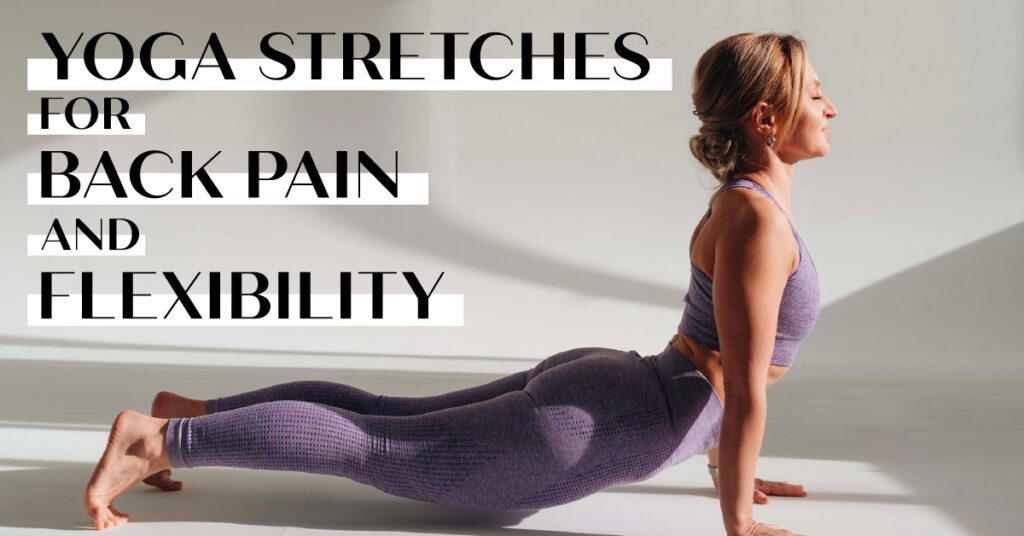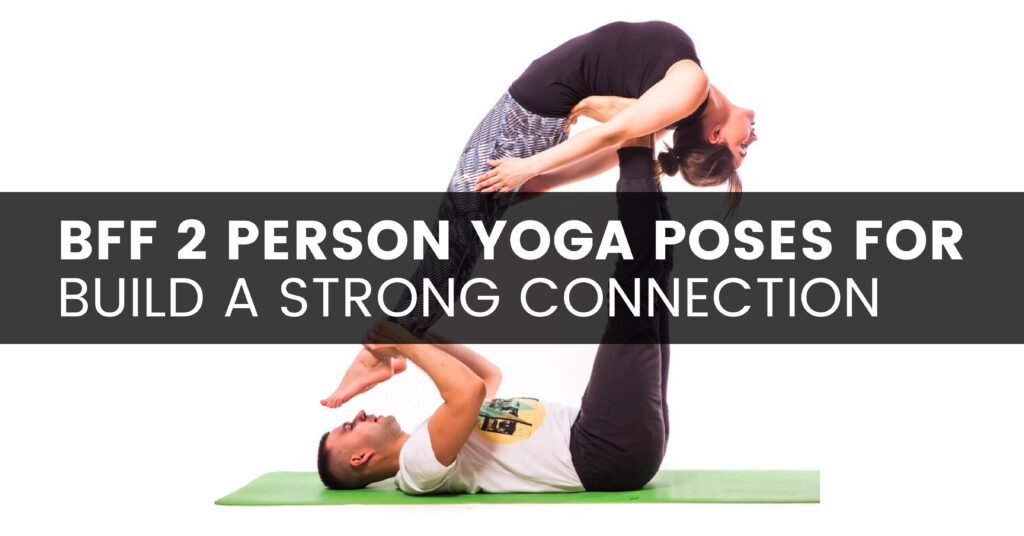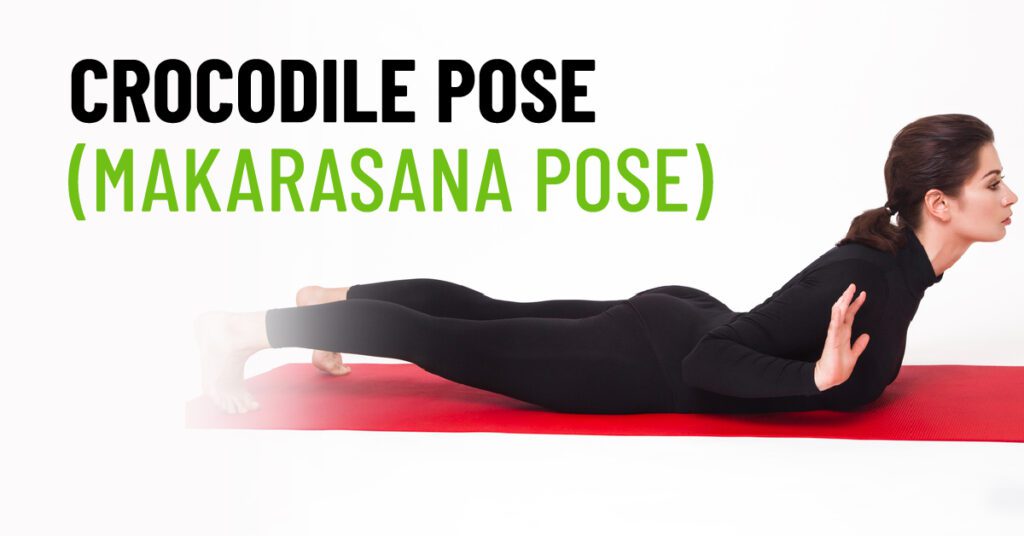Hard Yoga Pose for The Abs: Get the Abs You Desire

Also available in
When it comes to core strength and stability, yoga is an excellent practice that offers numerous benefits. There are specific poses that target the abdominal muscles more intensely, helping you achieve a stronger and more toned midsection. In this article, we will explore the hard yoga pose for the abs, providing you with a comprehensive guide on how to perform these poses correctly, along with their benefits and variations.
Whether you are a yoga enthusiast looking to add more intensity to your practice or someone seeking a new way to strengthen and tone your core, this guide will provide you with the knowledge and inspiration to take your core strength to new heights.
Hard Yoga Pose for the Abs
Yoga poses that focus on the abs not only help you build a strong core but also improve your posture, balance, and overall body control. Incorporating these challenging poses into your yoga routine can provide a dynamic workout for your abdominal muscles, leading to increased strength and stability.
Let’s explore the hard yoga pose for the abs that will take your practice to the next level.
Dolphin Plank Pose
The Dolphin plank pose is a challenging variation of the plank pose that further intensifies the engagement of the core and arms. To perform the dolphin plank pose, follow these steps:
- Start in a forearm plank position with your elbows directly under your shoulders.
- Engage your core and lift your hips, forming a straight line from head to heels.
- Press your forearms and palms firmly into the mat.
- Hold the pose for 30 seconds to 1 minute, maintaining proper alignment.
Variations: Dolphin Plank with Leg Lift, Dolphin Side Plank
Scale Pose
Scale pose is an advanced arm balance that requires significant core strength. It targets the abs, arms, and shoulders, providing a challenging workout for your entire upper body. To perform the scale pose, follow these steps:
- Start by sitting down and extending your legs out in front of you.
- Your hands should be on the mat next to your hips with your fingers pointing forward.
- Lift your hips off the mat, straightening your arms.
- Engage your core and lift one leg off the ground, extending it forward.
- After maintaining the position for 10 to 20 seconds, switch legs.
Variations: One-Legged Scale Pose, Advanced Scale Pose
Handstand
Handstand is an advanced inversion that not only requires strong core muscles but also improves balance and body awareness. To perform a handstand, follow these steps:
- Start by facing a wall, placing your hands on the mat shoulder-width apart.
- Kick your legs up, aiming to touch the wall with your feet.
- Engage your core and maintain a straight line from wrists to hips.
- Press firmly through your hands and hold the pose for as long as you can.
Variations: Forearm Stand, One-Legged Handstand
Crow Pose
Crow pose is also known as Bakasana. It is an arm-balancing pose that strengthens the core and tones the abs. To perform the crow pose, follow these steps:
- Start by squatting down with your feet slightly spaced.
- Your hands should be placed on the carpet with your fingers extended widely.
- Bend your elbows and shift your weight forward onto your hands.
- Bring your knees to the backs of your upper arms, just above the elbows.
- Engage your core, lift your feet off the ground, and balance on your hands.
Variations: Crane Pose, Side Crow Pose
Upward Plank Pose
The upward plank pose is also known as Purvottanasana. It is a challenging pose that strengthens the arms, shoulders, and core while stretching the front of the body. To perform the upward plank pose, follow these steps:
- Begin seated with your legs extended in front of you and your hands resting on the mat behind your hips, fingers pointing toward your feet.
- Press through your hands and lift your hips off the mat, coming into a reverse tabletop position.
- Engage your core and extend your legs out in front of you, keeping them parallel to the mat.
- Breathe deeply while maintaining the position for 30 to 1 minute.
Variations: One-Legged Upward Plank Pose, Incline Plank Pose
Benefits of Hard Yoga Pose for the Abs
Hard yoga pose for the abs offer a range of benefits beyond just strengthening and toning the abdominal muscles. Let’s explore the key advantages:
1. Increased Core Strength and Stability
Hard yoga poses specifically target the core muscles, including the rectus abdominis, transverse abdominis, and obliques. By engaging these muscles in challenging poses, you can significantly increase their strength and stability.
2. Toning and Sculpting the Abdominal Muscles
Regular practice of hard yoga pose for the abs can lead to improved muscle tone and definition in the abdominal region. These poses work the muscles from different angles, helping you achieve a sculpted and well-defined midsection.
3. Improved Posture and Body Alignment
A strong core is essential for maintaining good posture and proper body alignment. Hard yoga poses engage the deep core muscles that support the spine, promoting better posture and alignment both on and off the mat.
4. Enhanced Balance and Coordination
Many hard yoga poses require a high degree of balance and coordination. By practicing these poses, you can improve your proprioception and body awareness, leading to better balance and coordination in your daily activities.
5. Increased Body Awareness and Mindfulness
Hard yoga poses challenge your body and mind, requiring focused attention and concentration. Through the practice of these poses, you can cultivate a deeper sense of body awareness and mindfulness, fostering a stronger mind-body connection.
6. Boosted Overall Strength and Endurance
Hard yoga pose for the abs engage not only the core muscles but also other muscle groups in the body. Regularly practicing these poses can lead to improved overall strength and endurance, allowing you to perform physical activities with greater ease.
How to Incorporate Hard Yoga Poses into Your Routine
Incorporating a hard yoga pose for the abs into your yoga routine requires planning and mindful progression.
1. Set Specific Goals for Core Strength and Abdominal Development
Define your goals and intentions for incorporating hard yoga poses into your practice. Whether you aim to increase core strength, tone your abs, or improve balance, having clear objectives will guide your journey.
2. Gradually Progress and Challenge Yourself with Harder Poses Over Time
Start with foundational poses and gradually introduce more challenging variations as your strength and flexibility improve. Progression should be gradual to avoid injury and allow your body to adapt to the demands of the poses.
3. Balance Hard Poses with Restorative and Gentle Practices
Integrate hard yoga poses with restorative and gentle practices to create a well-rounded routine. This balance will provide your body with the recovery it needs while still challenging your core muscles.
4. Consult with a Qualified Yoga Instructor
Working with a qualified yoga instructor can provide valuable guidance and ensure that you practice hard yoga poses with proper alignment and technique. They can also offer modifications and adjustments tailored to your individual needs and abilities.
Proper Form and Alignment in Hard Yoga Poses
Maintaining proper form and alignment is crucial when practicing a hard yoga pose for the abs. Here are some general guidelines to help you achieve optimal alignment:
1. Engage Your Core Muscles
Focus on engaging your core muscles throughout the poses. Draw your navel toward your spine and maintain a strong, stable core to support your body and protect your lower back.
2. Lengthen Your Spine
Incorporate proper spinal alignment by lengthening your spine in each pose. Imagine a string pulling you upward from the crown of your head, creating space between each vertebra.
3. Maintain a Neutral Pelvis
Keep your pelvis in a neutral position by aligning your hips and tailbone. Avoid excessive arching or rounding of the lower back, as it can strain the spine and compromise the effectiveness of the pose.
4. Align Your Joints
Pay attention to the alignment of your joints, such as knees, elbows, and wrists. Maintain a stacked position, with joints directly over one another, to avoid unnecessary stress and potential injuries.
5. Breathe Mindfully
Remember to breathe deeply and rhythmically throughout the poses. Deep breathing not only oxygenates your muscles but also helps you stay present and connected to your body.
These guidelines serve as a starting point for practicing hard yoga poses with proper form and alignment. However, keep in mind that each pose may have specific alignment cues, so consult with a yoga instructor for personalized guidance.
Preventing and Managing Injuries in Hard Yoga Poses
While practicing a hard yoga pose for the abs can be beneficial, it is important to prioritize safety and injury prevention.
1. Listen to Your Body
Keep a close eye on your body’s signals and be mindful of its limitations. If a pose causes pain or discomfort beyond the normal sensations of a stretch, modify or come out of the pose.
2. Warm Up Properly
Always warm up before attempting hard yoga poses. Incorporate gentle stretches and movements to warm up your muscles, increase circulation, and prepare your body for the demands of the practice.
3. Gradually Increase Intensity
Progress slowly and gradually increase the intensity of your practice. Avoid pushing yourself too hard or attempting advanced poses before you are adequately prepared. Build a solid foundation with basic poses and gradually challenge yourself over time.
5. Use Props and Modifications
Yoga props, such as blocks, straps, and bolsters, can provide support and assistance in hard yoga poses. Utilize props to modify poses and make them more accessible while maintaining proper alignment and reducing the risk of injury.
6. Seek Guidance from a Qualified Instructor
If you are new to hard yoga poses or have any concerns about your technique, consult with a qualified yoga instructor. They can guide you in proper alignment, offer modifications, and provide personalized recommendations to prevent injuries.
7. Practice Self-Care and Rest
Allow yourself enough time for rest and recovery. Incorporate restorative yoga practices, gentle stretching, and relaxation techniques to support your body’s healing process and prevent overuse injuries.
Remember, the goal of yoga is not to push your body beyond its limits but to develop strength, flexibility, and mindfulness in a safe and sustainable way. Prioritize your well-being and listen to your body’s needs throughout your yoga practice.
Yoga Props and Modifications for Hard Yoga Poses
Yoga props and modifications can be incredibly useful in practicing hard yoga pose for the abs. They provide support, increase accessibility, and help maintain proper alignment. Here are some common props and modifications to consider:
1. Blocks
In a boat pose, you can place a block under your feet if you struggle to lift them off the ground. Blocks can also be used to bring the ground closer to your hands in poses like scale pose.
2. Straps
Straps are helpful for extending your reach and improving flexibility in poses where you need to hold onto your feet or legs. For instance, if you find it challenging to reach your toes in seated forward folds, you can use a strap to bridge the gap.
3. Bolsters
Bolsters are soft, supportive cushions that can be used to make poses more comfortable and restorative. In challenging poses like the crow pose, you can place a bolster under your forehead to alleviate pressure on your wrists and provide a stable base.
4. Blankets
Blankets offer padding and support, particularly for sensitive joints or bony areas. You can fold a blanket and place it under your knees in poses like scale pose to cushion the pressure on your knees.
5. Wall Support
Using a wall for support can be helpful in challenging poses like handstands. It provides stability and a sense of security as you work on building strength and balance. Gradually, you can decrease your reliance on the wall as your confidence grows.
Remember to use props and modifications as tools to support your practice and make the poses more accessible. Experiment with different options and find what works best for your body and individual needs.
Nutrition and Hydration for Optimal Core Strength
Maintaining proper nutrition and hydration is crucial for optimal core strength and overall well-being. Here are some key considerations:
1. Eat a Balanced Diet
Aim for a mix of lean proteins, whole grains, fruits, vegetables, and healthy fats. These provide the necessary fuel and nutrients to support muscle growth and repair.
2. Stay Hydrated
Hydration is essential for optimal bodily functions, including muscle performance and recovery. Drink an adequate amount of water throughout the day, especially during and after your yoga practice. Listen to your body’s thirst cues and aim to maintain proper hydration levels.
3. Consume Adequate Protein
Include lean sources of protein in your diet, such as poultry, fish, tofu, beans, and lentils. Aim for a balanced intake of protein throughout the day to support your core strength and recovery.
4. Incorporate Healthy Fats
Healthy fats, such as avocados, nuts, seeds, and olive oil, are essential for maintaining overall health and supporting your body’s functions. They provide energy and help absorb fat-soluble vitamins, which are crucial for muscle health.
5. Prioritize Whole Foods
Opt for whole, unprocessed foods whenever possible. These foods are rich in vitamins, minerals, and fiber, providing the necessary nutrients for optimal core strength and overall well-being.
Remember that nutrition is a vital component of your yoga practice and core strength journey. Fuel your body with nourishing foods and stay hydrated to support your physical and mental well-being.
Common Mistakes to Avoid in Hard Yoga Poses
When practicing a hard yoga pose for the abs, it is important to be aware of common mistakes that can hinder your progress and potentially lead to injuries. Here are some mistakes to avoid:
1. Sacrificing Proper Alignment for Depth
Maintaining proper alignment should always take precedence over achieving a deeper expression of a pose. Avoid sacrificing alignment to go deeper. Focus on proper form, engage your core, and work within your current range of motion.
2. Holding Your Breath
It is common to hold your breath or breathe shallowly when attempting challenging poses. However, this limits oxygen flow to your muscles and can increase tension. Remember to breathe deeply and rhythmically throughout the practice.
3. Overworking the Abs
While hard yoga poses target the abs, it is essential to avoid overworking these muscles. Overexertion can lead to strain and imbalances. Balance your practice with poses that target other muscle groups and allow your abs to rest and recover.
4. Rushing the Progression
Progressing in yoga takes time and patience. Avoid rushing through poses or attempting advanced variations before you are ready. Give yourself time to build a strong foundation and gradually progress at a pace that feels comfortable and sustainable.
5. Neglecting Proper Warm-Up and Cool-Down
Prioritize a proper warm-up to prepare your muscles and joints for the demands of hard yoga poses. Similarly, incorporate a cool-down to stretch and release tension after your practice.
By avoiding these common mistakes and practicing mindfully, you can enhance your progress, prevent injuries, and experience the full benefits of a hard yoga pose for the abs.
Conclusion
Incorporating a hard yoga pose for the abs into your practice can take your core strength and stability to new heights. These challenging poses engage your abdominal muscles and offer a multitude of physical and mental benefits.
By following proper form, gradually progressing, and listening to your body, you can strengthen your core and achieve a toned midsection.
Remember to practice mindfully, breathe deeply, and enjoy the journey of strengthening your core through yoga.
Frequently Asked Questions (FAQs)
Can yoga help me get visible abs?
Absolutely! Yoga is a fantastic way to strengthen and tone your core muscles, including the abs. By regularly practicing yoga poses that engage the abdominal muscles, combined with a healthy diet and overall fitness routine, you can achieve visible abs.
How often should I practice hard yoga pose for the abs?
It is recommended to practice yoga at least 2-3 times per week to see significant improvements in core strength. However, listen to your body and adjust the frequency according to your fitness level and personal goals.
Are hard yoga poses suitable for beginners?
Some hard yoga poses require a certain level of strength and flexibility, making them more suitable for intermediate or advanced practitioners. If you are a beginner, it is essential to start with foundational poses and gradually build up your strength before attempting more challenging poses.
Can yoga help with back pain?
Yes, yoga can be highly beneficial for relieving and preventing back pain. Many yoga poses, including those that target the abs, also engage and strengthen the back muscles, promoting better posture and spinal alignment.
Should I warm up before attempting hard yoga poses?
Yes, warming up before practicing hard yoga poses is essential to prepare your body and prevent injuries. Incorporate gentle stretches, joint mobilization exercises, and a few rounds of sun salutations to warm up your muscles and increase blood flow.
We would love to hear your thoughts on this hard yoga pose for the abs. Share this article with your fellow yogis and fitness enthusiasts, and let’s empower each other on the path to a stronger core.
You May Also Like To Read…
- Spider Curl Workouts to Build Big Biceps
- 8 Effective Exercise for Inner Thighs
- How to Do Standing Leg Curls – Benefits, Variations, and Tips
- The Ultimate Dumbbell Front Squat Workout
- Boat Pose Exercise (Navasana): Steps, Benefits, and Variations
- Quick and Easy 10-Minute Yoga Stretch for Daily Wellness
- How To Do Wheel Yoga Pose
- Hot Yoga for Weight Loss: Beginner’s Guide






